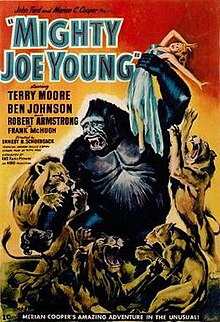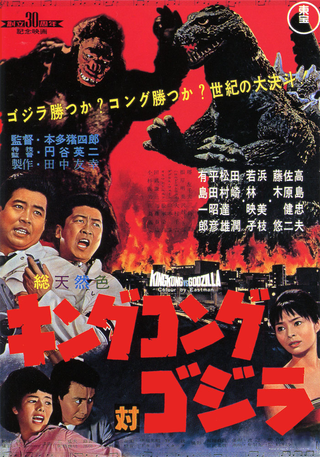
King Kong vs. Godzilla is a 1962 Japanese kaiju film directed by Ishirō Honda, with special effects by Eiji Tsuburaya. Produced and distributed by Toho Co., Ltd, it is the third film in both the Godzilla and King Kong franchises, as well as the first Toho-produced film featuring King Kong. It is also the first time that each character appeared on film in color and widescreen. The film stars Tadao Takashima, Kenji Sahara, Yū Fujiki, Ichirō Arishima, and Mie Hama, with Shoichi Hirose as King Kong and Haruo Nakajima as Godzilla. In the film, Godzilla is reawakened by an American submarine and a pharmaceutical company captures King Kong for promotional uses, culminating in a battle on Mount Fuji.
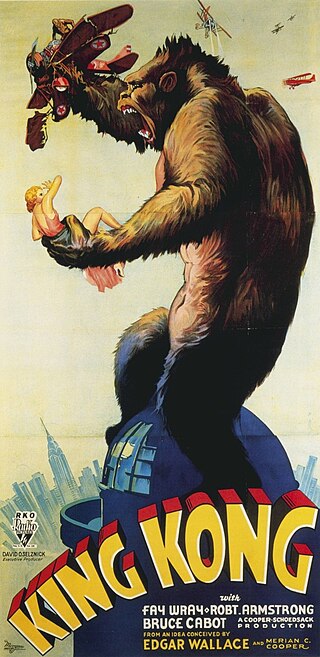
King Kong is a 1933 American pre-Code adventure horror monster film directed and produced by Merian C. Cooper and Ernest B. Schoedsack, with special effects by Willis H. O'Brien. Produced and distributed by RKO Radio Pictures, it is the first film in the King Kong franchise. The film stars Fay Wray, Robert Armstrong and Bruce Cabot. In the film, a giant ape dubbed King Kong captured from Skull Island attempts to possess a beautiful young woman.

Willis Harold O'Brien, known as Obie O'Brien, was an American motion picture special effects and stop-motion animation pioneer, who according to ASIFA-Hollywood "was responsible for some of the best-known images in cinema history," and is best remembered for his work on The Lost World (1925), King Kong (1933), The Last Days of Pompeii (1935) and Mighty Joe Young (1949), for which he won the 1950 Academy Award for Best Visual Effects.

Raymond Frederick Harryhausen was an American-British animator and special effects creator who created a form of stop motion model animation known as "Dynamation". His works include the animation for Mighty Joe Young (1949) with his mentor Willis H. O'Brien ; his first color film, The 7th Voyage of Sinbad (1958); and Jason and the Argonauts (1963), which featured a sword fight with seven skeleton warriors. His last film was Clash of the Titans (1981), after which he retired.
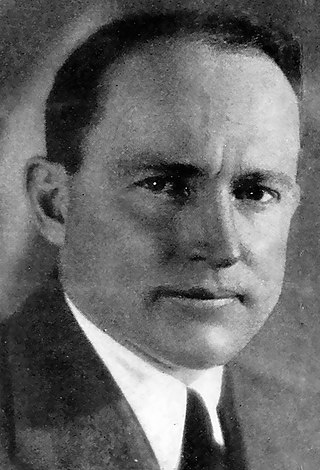
Merian Caldwell Cooper was an American filmmaker, actor, and producer, as well as a former aviator who served as an officer in the United States Army Air Service and Polish Air Force. In film, his most famous work was the 1933 movie King Kong, and he is credited as co-inventor of the Cinerama film projection process. He was awarded an honorary Oscar for lifetime achievement in 1952 and received a star on the Hollywood Walk of Fame in 1960. Before entering the movie business, Cooper had a distinguished career as the founder of the Kościuszko Squadron during the Polish–Soviet War and was a Soviet prisoner of war for a time. He got his start in with film as part of the Explorers Club, traveling the world and documenting adventures. He was a member of the board of directors of Pan American Airways, but his love of film took priority. During his film career, he worked for companies such as Pioneer Pictures, RKO Pictures, and Metro-Goldwyn-Mayer. In 1925, he and Ernest B. Schoedsack went to Iran and made Grass: A Nation's Battle for Life, a documentary about the Bakhtiari people.
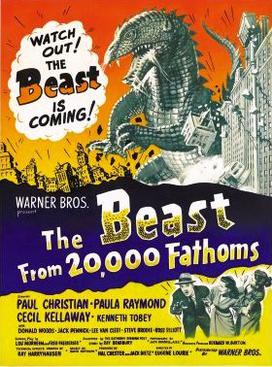
The Beast from 20,000 Fathoms is a 1953 American science fiction action horror film directed by Eugène Lourié, with special effects by Ray Harryhausen. The film stars Paul Christian, Paula Raymond, Cecil Kellaway, and Kenneth Tobey. The screenplay is based on Ray Bradbury's 1951 short story "The Fog Horn", specifically the scene where a lighthouse is destroyed by the title character. The film is about the Rhedosaurus, a dinosaur that is released from its frozen hibernating state by an atomic bomb test in the Arctic Circle and begins to wreak a path of destruction as it travels southward, eventually arriving at its ancient spawning grounds, which includes New York City.

The Valley of Gwangi is a 1969 American fantasy Western film produced by Charles H. Schneer and Ray Harryhausen, directed by Jim O'Connolly, written by William Bast, and starring James Franciscus, Richard Carlson, and Gila Golan.

King Kong, also referred to simply as Kong, is a fictional giant monster, or kaiju, resembling a gorilla, who has appeared in various media since 1933. Kong has been dubbed the King of the Beasts and over time it would also be bestowed the title of the Eighth Wonder of the World, a widely recognized expression within the franchise. His first appearance was in the novelization of the 1933 film King Kong from RKO Pictures, with the film premiering a little over two months later.

The Son of Kong is a 1933 American Pre-Code adventure monster film produced by RKO Pictures. Directed by Ernest Schoedsack and featuring special effects by Willis O'Brien and Buzz Gibson, the film stars Robert Armstrong, Helen Mack and Frank Reicher. The film is the sequel to King Kong, being released just nine months after and is the second entry of the King Kong franchise.

The Black Scorpion is a 1957 black-and-white Mexican-American giant arachnid horror film from Warner Bros., produced by Jack Dietz and Frank Melford, directed by Edward Ludwig, and starring Richard Denning, Mara Corday, Carlos Rivas, and Mario Navarro. The film's stop-motion animation special effects were created by Willis O'Brien. In the film, volcanic activity releases giant prehistoric scorpions from the earth. They wreak havoc in the rural countryside and eventually threaten Mexico City.

Robert William Armstrong was an American film and television actor remembered for his role as Carl Denham in the 1933 version of King Kong by RKO Pictures. He delivered the film's famous final line: "It wasn't the airplanes. It was beauty killed the beast."
Marcel Delgado was a sculptor and model-maker. His technique revolutionized the stop motion film industry. He is best known for his work on the 1933 film King Kong.
Linwood G. Dunn, A.S.C. was an American pioneer of visual special effects in motion pictures and an inventor of related technology. Dunn worked on many films and television series, including the original 1933 King Kong (1933), Citizen Kane (1941), and Star Trek (1966–69).
Model animation is a form of stop motion animation designed to merge with live-action footage to create the illusion of a real-world fantasy sequence.

Mighty Joe Young is a 1998 American epic adventure film based on the 1949 film of the same name about a giant mountain gorilla brought to a wildlife preserve in Los Angeles by a young woman who raised him, and a zoologist, to protect him from the threat of poachers until one seeks Joe out in order to take his revenge. It was directed by Ron Underwood and stars Bill Paxton, Charlize Theron, Rade Šerbedžija, Naveen Andrews, Regina King and David Paymer. Creature suit actor John Alexander plays the title character. In this version, the ape is much larger than in the original. The film received mixed reviews and grossed $50.6 million in the United States against a production budget of $90 million, making it a box-office bomb.

A monster movie, monster film, creature feature or giant monster film is a film that focuses on one or more characters struggling to survive attacks by one or more antagonistic monsters, often abnormally large ones. The film may also fall under the horror, comedy, fantasy, or science fiction genres. Monster movies originated with adaptations of horror folklore and literature.
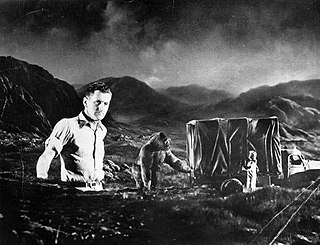
Pete Peterson was an American motion picture special effects and stop-motion animation pioneer, best remembered for his work with Willis H. O'Brien on Mighty Joe Young (1949), The Black Scorpion (1957) and The Giant Behemoth (1959).

Live-action animated is a film genre that combines live-action filmmaking with animation. Projects that are both live-action and computer-animated tend to have fictional characters or figures represented and characterized by cast members through motion capture and then animated and modeled by animators. Films that are live-action and traditionally animated use hand-drawn, computer-generated imagery (CGI), or stop-motion animation.
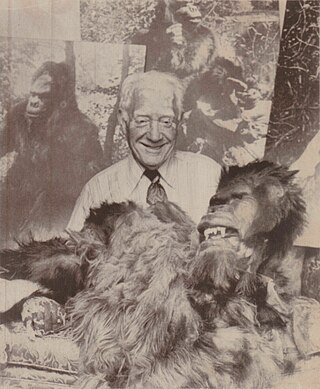
Carmen Nigro was an American chef who professed to have worked for three decades as a Hollywood stuntman under the professional name Ken Roady. From 1969 he gained notability through media interviews in which he announced he had acted in a gorilla suit in many Hollywood films, most famously as the title role in the 1933 classic King Kong. While Nigro's claims were accepted as fact by some journalists and authors during his lifetime, film historians generally have disputed his account, and regard him as an impostor.

King Kong is an American monster media franchise that consists of thirteen films, as well as television, novels, comic books, video games, attractions, and other merchandise. The franchise is centered on King Kong, a giant ape living on a primordial island inhabited by prehistoric creatures. The original film King Kong was co-directed by Merian C. Cooper and Ernest B. Schoedsack and was released on March 2, 1933; it was a box office success, despite opening during the Great Depression. The film's stop motion effects by Willis H. O'Brien revolutionized special effects, leaving a lasting impact on the film industry worldwide.
